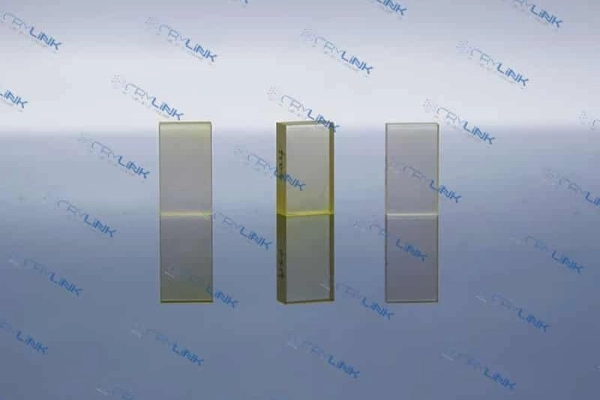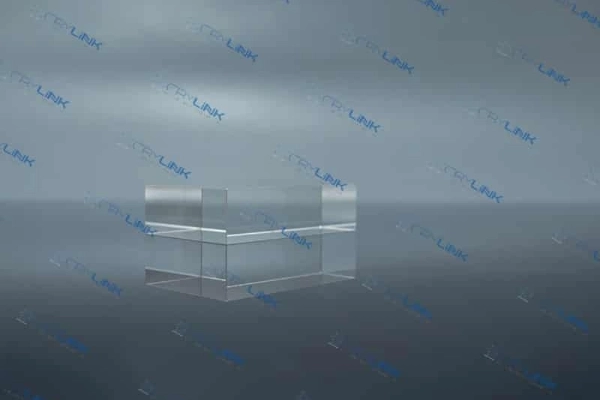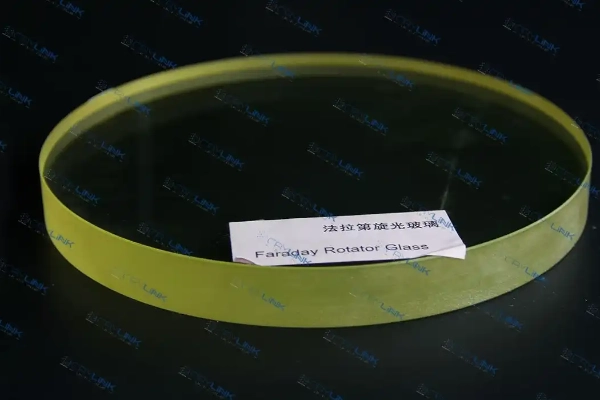Diving into the World of Magneto-Optical Crystals
Deep within the realms of optical research lies the enigma of magneto-optical crystals. These crystals serve as a bridge, connecting the seemingly disparate worlds of light and magnetic fields. While at first glance, light and magnetism might appear unrelated, magneto-optical crystals stand as a testament to nature’s intricate design, showcasing how these two forces can interact in captivating ways.

Magneto-optical crystals come with a unique capability: their optical properties aren’t static but are influenced by external magnetic fields. When one thinks of regular crystals interacting with light, the relationship is straightforward—light enters, might get refracted or reflected, and exits. However, introduce a magnetic field into the equation, and the dynamics change remarkably.
The allure of these crystals doesn’t merely stem from their ability to interact with magnetic fields. It’s the wide-ranging applications and potential they hold that truly sets them apart. From data storage devices to advanced sensors, the world is only beginning to scratch the surface of what’s possible with magneto-optical crystals.
The Magneto-Optical Effect: A Symphony of Light and Magnetic Fields
To appreciate the magneto-optical effect, one must first grasp the delicate dance between light and magnetic fields. Imagine light as a traveler, journeying through a landscape (the material). In the absence of a magnetic field, this voyage is relatively predictable. However, introduce a magnetic field, and the journey takes on unexpected twists and turns.
This magnetic field doesn’t just sit idly; it actively interacts with the light, altering its path and characteristics. Depending on the nature and strength of the magnetic field and the properties of the material (crystal) it’s passing through, light might experience changes in its intensity, its direction, or even its polarization.

One of the most celebrated manifestations of the magneto-optical effect is the Faraday Effect. Named after the eminent scientist Michael Faraday, this phenomenon witnesses the rotation of the plane of polarization of light as it passes through a material subjected to a magnetic field.

But why is this rotation significant? It offers a tangible way to measure the strength of the magnetic field, providing invaluable insights in various scientific and industrial applications.
To sum it up, the magneto-optical effect and the crystals that exhibit it offer a mesmerizing glimpse into the intricacies of our universe, where light and magnetism converge in harmonious synchrony.
Key Characteristics of Magneto-Optical Crystals
Delving into the realm of magneto-optical crystals, one can’t help but be mesmerized by their multifaceted characteristics. These properties not only define their behavior but also underline their significance in various technological and scientific applications.
Magnetic Field Dependence
At the heart of magneto-optical crystals lies their intrinsic relationship with magnetic fields. Unlike regular crystals, the behavior of magneto-optical ones is intricately tied to external magnetic stimuli. Specifically, their refractive indices, which dictate how they interact with light, shift with the intensity of the magnetic field applied. This is akin to a dancer adjusting their movements in tune with the rhythm of the music.

The stronger the field, the more pronounced the changes. This characteristic proves invaluable in applications where precise control of light behavior is paramount, as adjustments to the magnetic field can fine-tune the crystal’s optical response.
Polarization Alteration
Diving deeper into their interaction with light, a standout trait of magneto-optical crystals is their ability to alter light’s polarization. This isn’t just a subtle shift; they can rotate the plane of polarization, offering a potent tool for manipulating light in ways other materials cannot. This rotation isn’t just an abstract concept; it has real-world implications. For instance, devices that rely on specific light orientations, like certain advanced optical sensors, can harness this property to achieve unparalleled precision and flexibility.
Wavelength Sensitivity
The magneto-optical effect isn’t a one-size-fits-all phenomenon. It exhibits a beautiful sensitivity to the wavelength of light it interacts with. In essence, different light colors or wavelengths might experience varying degrees of the effect within the same crystal. This characteristic is not a limitation but an opportunity. It allows for the design of spectral-specific devices, where certain wavelengths are chosen for specific tasks, enhancing the efficiency and adaptability of the system. Whether it’s filtering out specific wavelengths or fine-tuning optical systems for specific colors, the potential applications are boundless.
In conclusion, magneto-optical crystals are not mere passive entities in the world of optics. They are dynamic, versatile, and teeming with potential, ready to redefine the boundaries of what’s possible in light manipulation and control.
Applications: Where Magneto-Optical Crystals Truly Shine
Magneto-Optical Storage: A Revolution in Data Storage
Remember the CD-ROMs? They utilized the magneto-optical effect. Here, data is written by altering the magnetic orientation of specific regions in the disc using a laser. This magnetic orientation can later be read out optically, providing a reliable and rewritable storage method.
Optical Modulation: Crafting the Future

Magneto-optical crystals are now finding applications in advanced optical modulation techniques. By controlling the magnetic field across these crystals, one can precisely manage the amplitude, phase, and polarization state of light.
Optical Isolators: Protecting Laser Systems
These crystals are instrumental in designing optical isolators, devices that allow light to travel in one direction only, protecting sensitive laser systems from back reflections.
Sensors and Measurement Systems
Magneto-optical sensors, leveraging these crystals, offer high precision in measuring magnetic fields and temperatures, benefiting industries like healthcare and automotive.
The Evolution of Magneto-Optical Crystals
The journey of magneto-optical crystals over the years has been nothing short of transformative. Their evolution can be likened to a bud blossoming into a full-fledged flower, displaying an array of vibrant petals. Earlier, these crystals were primarily constrained to limited fields, providing glimpses of their potential. However, as research intensified and our understanding deepened, we began to realize their multifaceted capabilities.
In recent times, there’s been a surge in the discovery of novel magneto-optical crystals, each with unique properties and potential applications. Their significance isn’t just limited to traditional optical systems anymore. We are witnessing a convergence where these crystals are finding their way into cutting-edge technologies. For instance, in the world of quantum computing, where information processing happens at the atomic or quantum level, magneto-optical crystals are being leveraged to manipulate quantum states with light. Moreover, as space exploration accelerates, these crystals are being eyed for their potential to aid in advanced navigation systems and instruments that rely on precise light manipulation in the harsh environment of space.
Potential Challenges and Limitations
However, as with any evolving technology, there are roadblocks on the path of magneto-optical crystals. One of the primary challenges faced is their sensitivity to temperature fluctuations. Even minor variations can influence their optical behavior, making them less predictable in certain scenarios. Additionally, the inherent challenge of producing these crystals without physical defects remains a significant hurdle. Imperfections at the microscopic level can greatly affect their performance, especially in applications that demand high precision.
Furthermore, for these crystals to manifest their magneto-optical effects, the presence of strong magnetic fields is often essential. Setting up such environments can be resource-intensive and might not always be feasible, especially in compact or mobile applications.
However, it’s crucial to note that these challenges aren’t roadblocks but rather stepping stones. With relentless research and innovation, many of these limitations are gradually being overcome. Scientists are developing methods to stabilize these crystals against temperature variations and are innovating ways to reduce defect occurrences during production.
In sum, while the road ahead for magneto-optical crystals has its share of challenges, the horizon looks promising, teeming with opportunities waiting to be harnessed.
Conclusion
Magneto-optical crystals, at the intersection of magnetism and optics, are rapidly solidifying their stance in modern technology. From data storage solutions of yesteryears to futuristic quantum applications, their influence is undeniable. As we’ve traversed through their characteristics and uses, one thing stands clear: these crystals are not just a technological marvel but also a testament to humankind’s relentless pursuit of understanding and manipulating the very fabric of our universe.
FAQs:
- What exactly are magneto-optical crystals?
- They are special materials that change their optical properties when exposed to a magnetic field.
- How do magneto-optical crystals differ from regular optical crystals?
- While both interact with light, magneto-optical crystals uniquely alter light’s properties in the presence of a magnetic field.
- Can we use these crystals in everyday devices?
- Yes, they’ve been used in CD-ROMs and are finding applications in advanced sensors and optical systems.
- What’s the Faraday Effect in relation to these crystals?
- It’s a phenomenon where the plane of polarization of light rotates as it travels through a magneto-optical material under a magnetic field.
- Why are they essential in optical isolators?
- They allow light to travel in only one direction, preventing back reflections that can damage sensitive laser components.

Frank
Frank graduated from the University of Shanghai for Science and Technology, majoring in optics. As a technical engineer at Crylink Company, he deeply understands crystal materials and laser components.
Related Video(s) with this Article
Related Product(s) with this Article
Related Application(s) with this Article
